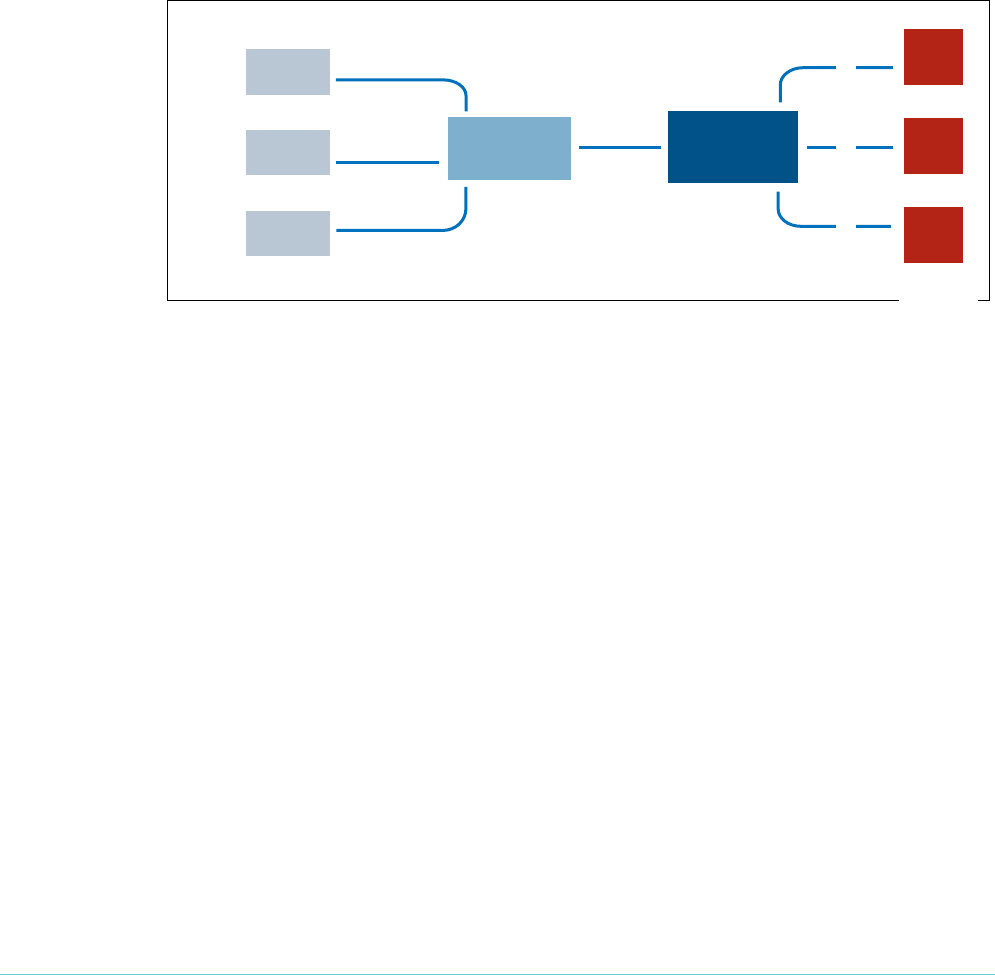
Page 32 | AlliedWare Plus™ OS: Overview of QoS
2: Policing one traffic type on combined ports
In this scenario, one type of traffic is collectively policed on several ports. The policer counts
all the packets that match the type’s class map on any of the ports.
This scenario uses an aggregate policer.
Use this type of scenario when you need to police all traffic of a certain type, even if it goes
over more than one port.
This configuration is useful in a situation like scenario
1
, except that instead of setting the
bandwidth limits on a per-port basis, you want to set the bandwidth limit on a per port-group
basis. For example, you could use this if groups of user ports on the switch were connected
to different departments of the business, and the company policy gave each department a
collective limit on the amount of certain traffic types that they could send.
The following figure shows this scenario.
Use the following commands to configure this policing scenario:
mls qos enable
mls qos aggregate-police aggr1 twin-rate 1000 200 5000 1000
exceed-action drop
class-map cm1
match access-group 3000
policy-map pm1
class cm1
police aggregate aggr1
interface port1.3.1-1.3.3
service-policy input pm1
The restricted traffic type is identified by an ACL (which could match, for example, by TCP/
UDP port).
policy-map
port
port
port
ACL
match
match
aggregate
policer
class-map
match <parameter>
match access-group
police aggregate <name>
service-policy input <policy-name>
class <name>
policer-2.eps


















